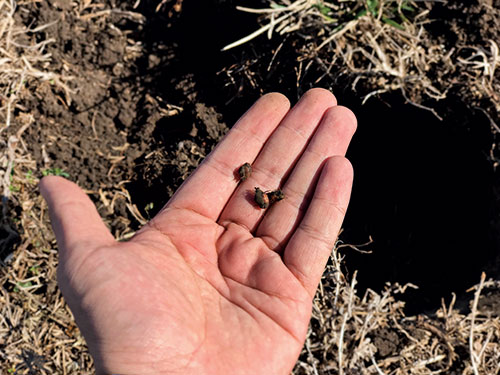Super Science: Managing unmellow yellow nutsedge

Yellow nutsedge tubers survive winter underground. Tubers may remain dormant for years and may sprout more than once in spring.
Yellow nutsedge is a difficult-to-control weed that increasingly is a problem on golf courses. Its yellow-green color, coarse foliage and fast growth decrease visual quality, uniformity and, in the worst case, playability.
Yellow nutsedge is a perennial that reproduces primarily through tubers, which may remain dormant in the soil for years and/or may sprout more than once in a year. Control from yellow nutsedge herbicides is inconsistent across years and geography, frustrating superintendents across the country.
In cool-season turf, the typical recommendation is to make an initial application before the summer solstice, when new tubers have not yet developed and nutsedge plants are relatively small. We think it may be too late to wait until late June for herbicide application.
We initiated a study in 2012, evaluating application timings of early June, summer solstice and mid-July or early August, using Sedgehammer (halosulfuron-methyl, Gowan) or Dismiss (sulfentrazone, FMC) at their recommended rates for yellow nutsedge control. The study also compared single applications to sequential applications made three weeks after the initial. We repeated the study for four years, observing control in the summer, plus yellow nutsedge coming back the following summer.
Results suggest the first application should be made the first week of June, followed up for maximum control with a second application three weeks later. The key is to apply herbicides as soon as the plant can be identified. We found Sedgehammer produced consistently better control, regardless of timing or number of applications. However, we still recommend using both herbicides over multiple years to limit the possibility of herbicide resistance.
A study is being established this year to understand what makes yellow nutsedge invasive in turfgrass. We will evaluate how fertility and irrigation amount affect the growth of yellow nutsedge.
Luqi Li, Roch Gaussoin, Ph.D., and Zac Reicher, Ph.D. Li and Gaussoin are at the University of Nebraska, and Reicher is with Bayer Environmental Science. Li can be reached at impinth06@hotmail.com for more information.
photo by: Luqi Li








